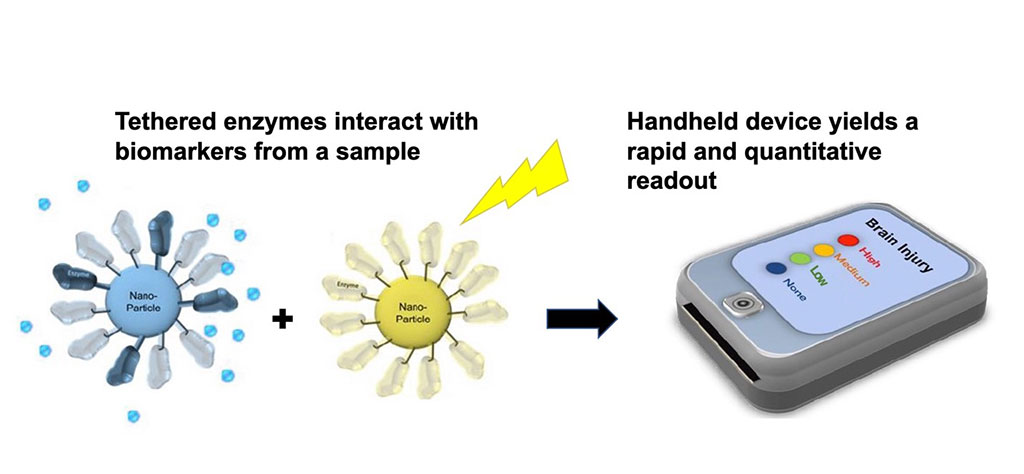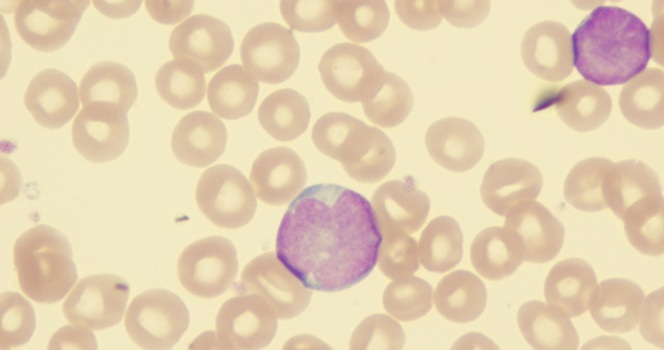Enzyme-Based Point-of-Care Test Could Rapidly Identify Stroke Patients upon Arrival at Hospital
Posted on 25 Mar 2022
Patients with stroke symptoms typically undergo a neurological exam followed by a CT scan to rule out a brain hemorrhage. If an ischemic stroke is diagnosed within four-and-a-half hours of experiencing symptoms, patients can receive the clot-dissolving medicine tPA. But currently, about 70% to 85% of patients miss that four-and-a-half-hour window, in part, because diagnosis takes too long. Also, about 10% of people with symptoms that mimic a stroke, such as a seizure, migraine headache or low blood sugar, receive tPA unnecessarily, putting them at risk of serious bleeding complications. Now, a new test could rapidly identify stroke patients upon arrival at the hospital, so that more patients could receive a CT scan and tPA treatment within the critical window.
Researchers at Cornell University (Ithaca, NY, USA) who began investigating how sperm cells swim more than two decades ago have uncovered a new way to diagnose stroke and other diseases. They have co-founded a company, TETDiagnostics, to transform what they learned from sperm into a bio-inspired diagnostic technology. Ultimately, the researchers plan to develop this enzyme-based technology into a range of diagnostic tests that can be performed anywhere using a handheld device. Their initial research has shown that the test effectively diagnoses stroke and concussions.

The technology grew out of their research into the basic biology of sperm. Their work has already grown into a commercially available male fertility test and contributed to the first puppies born by in vitro fertilization. Cells use a 10-step reaction to break down glucose to yield energy. In most cells, the enzymes involved are free-floating, but in sperm, they are anchored to the internal skeleton in the tail. The researchers copied this design and found they could add functions to nanoparticles by attaching different enzymes. The groups of the immobilized enzymes work even more efficiently than free-floating ones. The researchers considered other applications and settled on rapid, point-of-care diagnostic tests. Similar diagnostics, such as rapid COVID-19 tests and pregnancy tests, use antibodies, which are slower than enzymes, and give only yes-or-no results. In contrast, enzymes are “tiny biomachines” that grab onto disease biomarkers, change them and release them, giving off photons of light in the process. A lab instrument or handheld reader can detect the emitted light to quantify how much biomarker is in the sample.
The researchers chose stroke as one of the first applications for their diagnostic technology because the faster a blood clot in the brain - called an ischemic stroke - can be diagnosed and treated, the less damage to the patient’s brain. Their test could rapidly identify stroke patients upon arrival at the hospital, as well as weed out people with stroke mimics, saving them from potentially dangerous tPA treatment. The company has already performed a small pilot study of 50 patients who received the TET diagnostic test along with their evaluation for stroke. TETDiagnostics plans to develop point-of-care tests for use in clinics, at home, in schools, or on the battlefield for applications ranging from neural injuries, to liver damage and to infectious diseases such as COVID. These tests can also be used in veterinary clinics, to make quick and affordable diagnoses in animals.
“Enzymes are super efficient and work very fast to generate a readout signal, so the results are available in just a few minutes,” said Roy Cohen, a researcher at Cornell’s College of Veterinary Medicine (CVM). “Once we worked out how to attach the enzymes, there was an explosion of what we could do. There are so many disease biomarkers we can detect.”
Related Links:
Cornell University




 assay.jpg)









